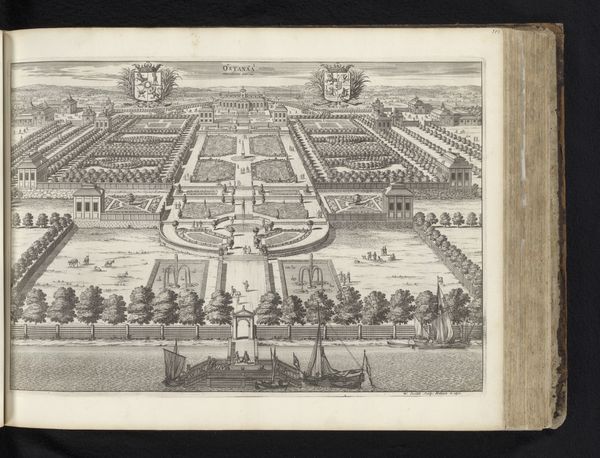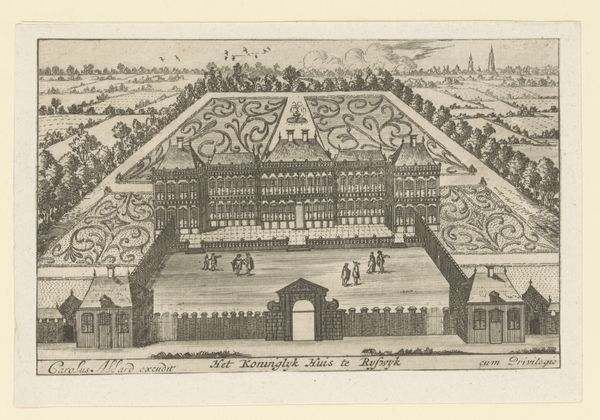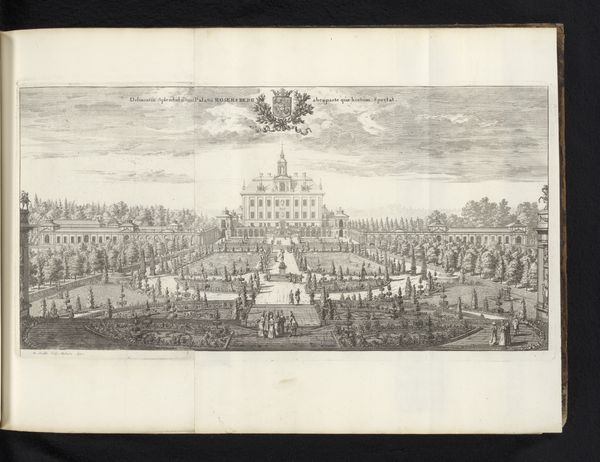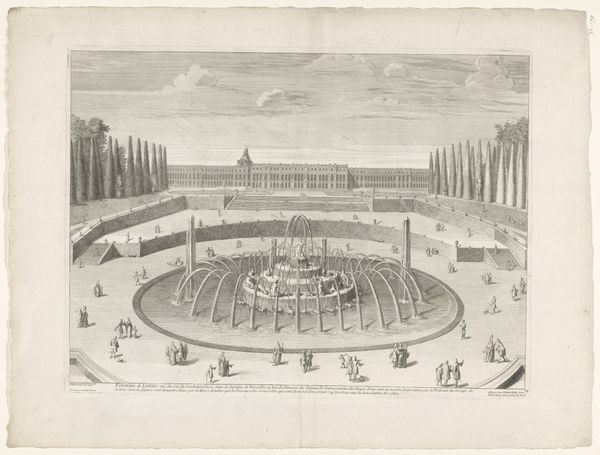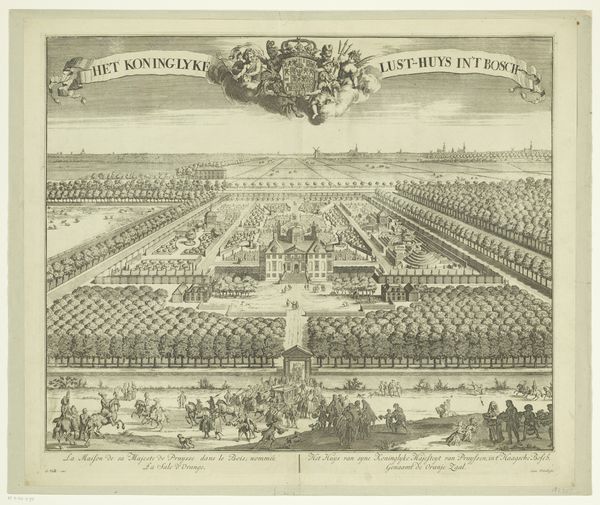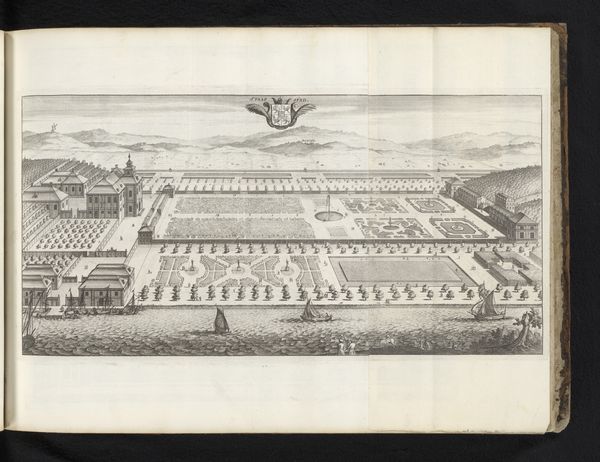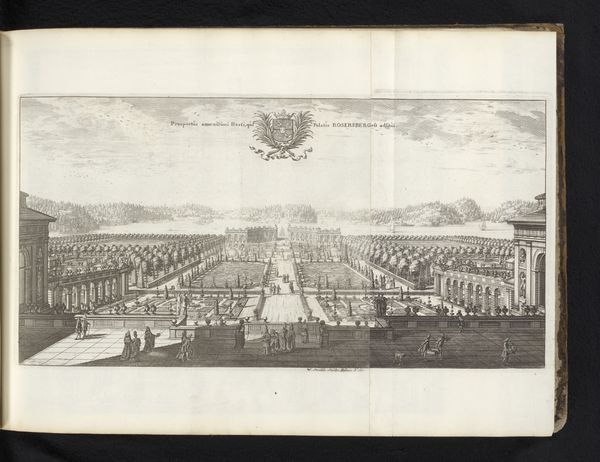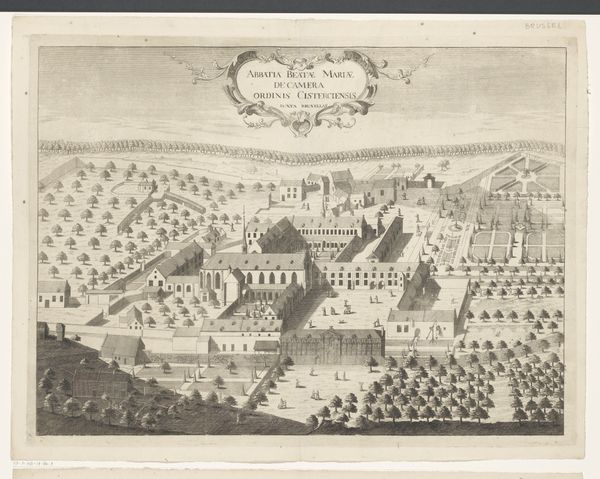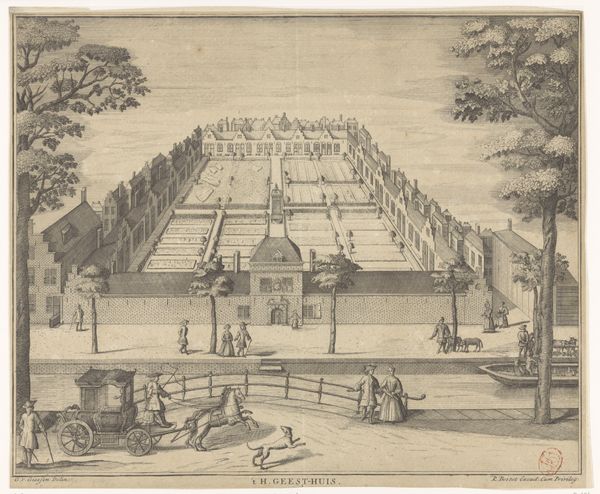
drawing, print, etching, paper, ink, engraving, architecture
#
drawing
#
baroque
# print
#
etching
#
landscape
#
paper
#
ink
#
cityscape
#
history-painting
#
northern-renaissance
#
engraving
#
architecture
Dimensions: height 220 mm, width 312 mm
Copyright: Rijks Museum: Open Domain
Curator: We're looking at Adam Perelle's "Gezicht op het paviljoen van Saint-Cloud," an etching made sometime between 1650 and 1707, currently residing at the Rijksmuseum. Editor: Immediately, I notice the pronounced orthogonal lines leading to the Saint-Cloud pavilion. It imposes a strong sense of order, of dominion over the landscape. A kind of artificial serenity achieved through geometry and meticulous arrangement. Curator: Absolutely. The Pavilion, centrally located within a series of symmetrical gardens, reflects the absolute authority of the French monarchy, its capacity to impose order not just politically but visually upon the world. Even the topiary and the precisely placed figures echo this controlled vision. Editor: Note how the lines of perspective converge slightly above the building’s central point; this gives the pavilion a soaring yet also implacable feel. It’s masterful manipulation of space through etching. The dark and light areas of ink usage add dimension to what otherwise would be simply shapes. Curator: Yes, and the etching’s symbolic language resonates deeply. The formal gardens, the fountains, the very architecture, these all speak to the ideals of the Baroque era – reason, clarity, and a celebration of human achievement and dominion. Think of how fountains at this time, harnessing water with powerful waterworks, served to showcase this new rational ordering. Editor: Consider too, though, how that strict geometry almost seems to flatten the space. It creates a sense of theatricality—as if the entire scene were a carefully staged set for the powerful, like a perfect chessboard. There’s very little feeling of the untamed. Curator: Precisely. Perelle has composed not just a landscape, but a representation of power. Saint-Cloud itself, viewed then and now through an ordered arrangement, presents enduring status. A world unto itself for centuries. Editor: Seeing this breakdown gives me a new appreciation for how it creates not just a pretty rendering of a place but instead suggests a complex social and intellectual environment. Curator: It demonstrates the intricate connections that visual art builds with memory and historical processes.
Comments
No comments
Be the first to comment and join the conversation on the ultimate creative platform.

